




PONY magazine, Olive Studio, The Timber Yard, Grange Road, Tilford, Farnham, Surrey GU10 2DQ
Tel 01428 601020
Advertising enquiries 01428 601028
Email pony@djmurphy.co.uk
Team PONY
Editor-in-Chief Louise Kittle
Assistant Editor Sarah Burgess
Editorial Assistant Megan Xavier-Witherington
Head of Art and Design Sarah Garland
Senior Designer Adam Witt
Junior Designer Lucy Claydon
Digital Marketing Manager Lianne Tadd
Marketing Assistant Alex Uren, Emily Weeks
Art Editor Paul Smail
Retail and Merchandising Assistant Evie Epps
Marketing Co-ordinator Alison Hill
Advertisement Manager Evie Edgar
Production Manager Eleanor Dunn
Executive PONY
Managing Director Zoe Cannon
Commercial Director Abi Cannon
Smooth operation PONY
Office Manager Vicki Owen
Accounts Manager Caroline Leishman
Accounts Executive Sarah Smith
Photography
Blenheim Palace International Horse Trials, Peter Nixon, Jon Stroud, Chelsea White. Studio 37, Anaite, nigel baker photography, Kwadrat/shutterstock.com
PONY subscriptions 01442 820580
Back issues ponymag.com/shop Digital
Visit the App store or Google
Wand bit.ly/PONY_PRIVACY
The paper used in PONY is sourced from chain-of-custody certified manufacturers, operating within international environmental standards. This ensures sustainable sourcing of the raw materials and sustainable production.
We’re sorry, but it may not be possible to include cover gifts on copies of PONY distributed outside the UK.
PONY supports social media safety – to have a Facebook, Instagram, Twitter or YouTube account you must be at least 13 years old. Always get your parents’ permission, too.
PONY recommends you wear an up-to-standard riding hat at all times when mounted.








e had so much fun visiting the ponies and pupils at Hanford School. We were so inspired, we’ve come up with loads of ways to horse-ify your school life! Because is there anything better than ponies every day? Nope! Turn to page 30 to find out more! Plus, don’t miss Harlow’s five polework secrets on p22. Boost your schooling and your bond with your fave pony with her tips! Until next month! Autumn VIBEs! WHAT DO YOU LOVE ABOUT AUTUMN?

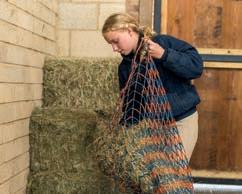
Follow our top 10 feeding must-dos on p48!








Write to us at PONY mag, Olive Studio, The Timber Yard, Grange Road, Tilford, Surrey GU10 2DQ or email pony@djmurphy.co.uk

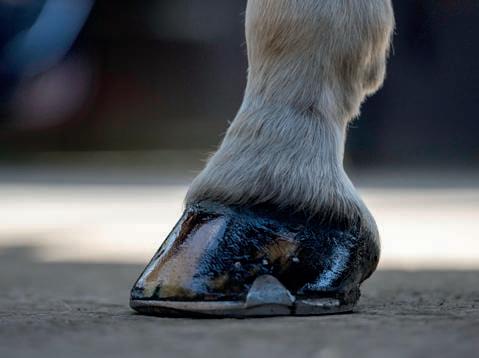
9–12 MOnths
The approximate time it takes to regrow an entire hoof!
1,000 years+ How long horses have been wearing shoes!
The perfect ground conditions. Say hello to zoomies! Sarah, Assistant Ed
Hacking through the autumn leaves with all the changing colours around me. It’s magical! Lucy, Junior Designer
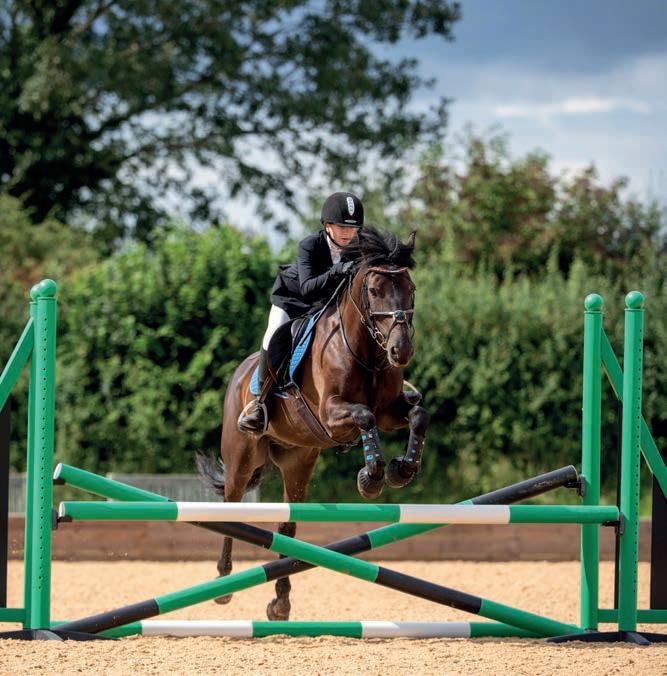

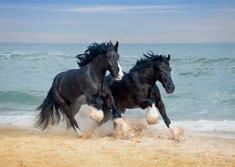


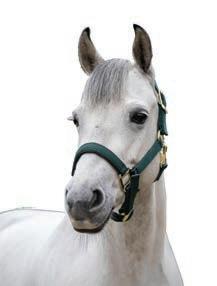
Check out Harlow’s
tips that’ll help perfect your polework sessions
Whether it’s in-hand or ridden, polework sessions are sooo good for ponies! There are loads of benefits, plus they’re a great way to spice up your flatwork. Here are five things you need to know…
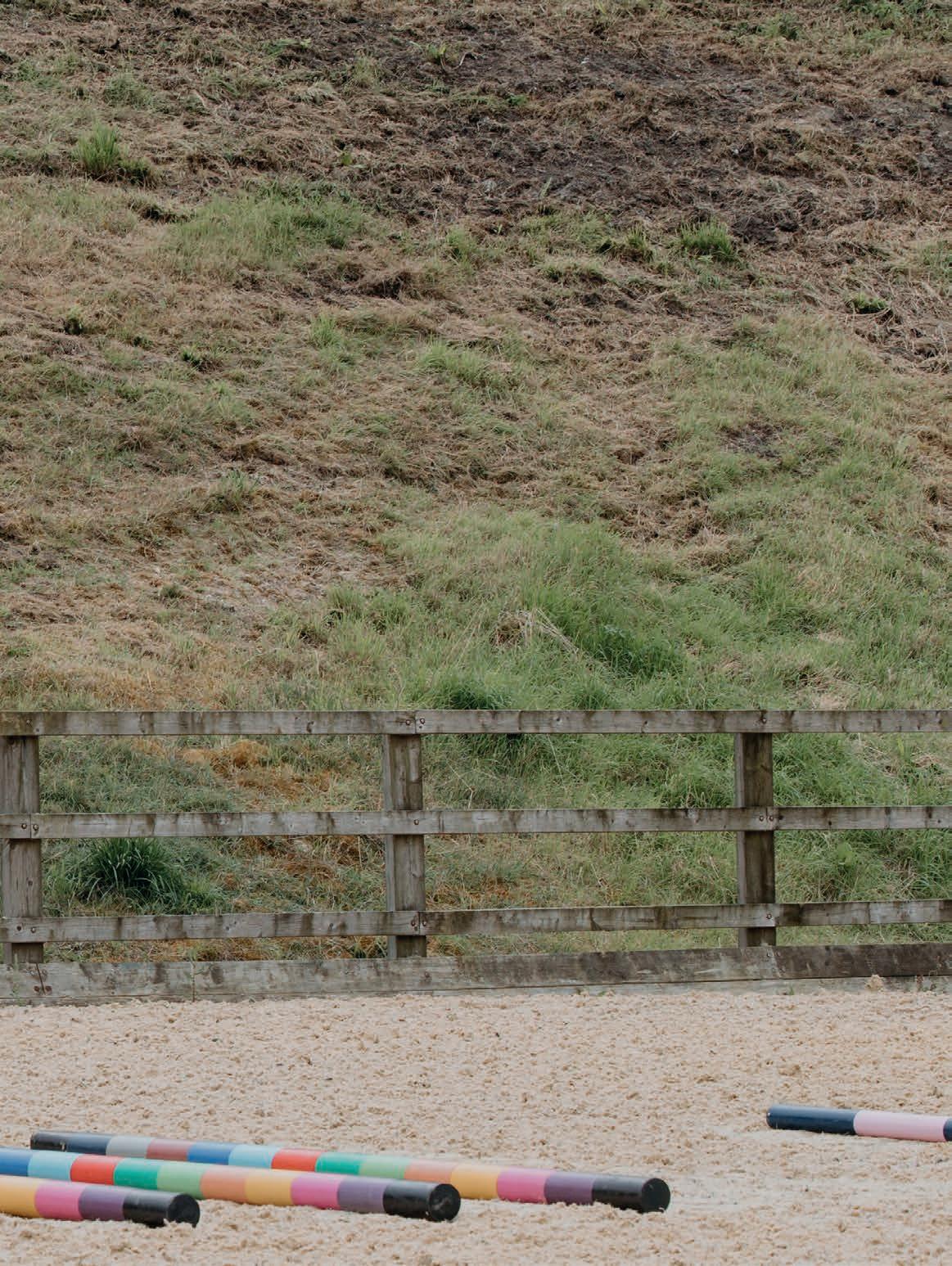
did you know?did you know?
Even the simplest of polework layouts can help improve your pony’s strength, suppleness, straightness and spatial awareness – how amazing is that!
There are literally hundreds of layouts to try, so whether you only have a few poles or a whole collection, you’ll never run out of options! If you’re struggling for inspo, you can always look up some ideas online – you could even include some blocks or small jumps to make things even more interesting!
You don’t have to pick up the pace to reap the benefits of polework! In fact, riding over poles in walk can be better for your pony than trotting over them. This is because he has to work harder, physically and mentally, to carefully lift each leg in the right order and into the correct place – amazing!

You don’t have to pick up the pace to reap the benefits of polework
It’s important to think about your position during polework sessions – you need to support your pony and help him stay in good balance, but without restricting him. Once you’ve set him up on a good approach, sit up tall, keep a soft rein contact and squeeze with your legs to maintain the rhythm, then let the poles do the work for you!
It’s helpful to have a friend on the ground to move the poles for you in case your pony taps one. Why not buddy up with a pal and help each other out?
Be in the know when it comes to turning your fave pony out in the field
Be in the know it comes turning your fave in the field
Ponies looove hanging out in the field with their friends. It’s a great chance to run around, eat some grass and enjoy a good roll. But you might not feel as excited about the idea of turning him out as he is about it Our guide to turning ponies out in the field will tell you everything you need to know!
Before you take your pony out to his field you’ll need to decide which rug – if any – he needs, depending on the weather and if your pony’s clipped or unclipped.
To prevent squabbles when putting hay in the field, make sure there are more piles than ponies and that they’re spread more than a pony’s distance apart.
Can’t decide? Don’t panic! If the weather’s a bit changeable and you’re confused about which rug to use, it’s better to put a lighter weight one on, or none at all, rather than over-rug. Ponies produce body heat from eating grass or hay, and they don’t feel the cold in the same way as people, either.
Brushing and overreach boots can be fitted to your pony during his time in the field, to help protect him from injury.
While you’re at the field, check your pony’s water supply is clean and do a quick check to ensure the fencing is secure and there’s nothing in the field your pony could injure himself on.
Now the rug situation is sorted, it’s time to get him ready to go out in the field...
• Grab your riding hat and gloves and make sure you’re wearing sturdy boots
• Tie up your pony
• Pick out his feet and give him a quick brush to remove any bedding from his coat
• Put on his rug, checking carefully to make sure everything’s fastened correctly
• Apply any creams or ointments your pony might need, such as barrier cream if he’s prone to mud fever or fly spray on milder days
• If you know your pony’s excitable to turn out, it’s a good idea to use a bridle rather than a headcollar to lead him
• Put on your riding hat and gloves and you’re all set to go































Just like us, it’s essential for ponies to eat a balanced diet, but are you clued up on the rules? Our 10 feeding must-dos will help to get you on the right tracks, so you’re in the know when it comes to keeping ponies feeling well and performing at their best. Here’s what to consider.
















2

Ponies have fairly small stomachs for their size and have evolved to eat little and often. To mimic this, split your pony’s daily forage ration and bucket feeds into as many portions as possible throughout the day. If your pony likes to gobble down his hay, use a small-holed haynet or slow feeder to increase his eating time.














Feeding a balancer will help ensure your pony’s getting everything he needs. If he’s a good-doer, opt for a low-cal version.

















If you’re making any adjustments to your pony’s diet the microbes in his gut need time to adapt, so introduce new feeds gradually over at least a couple of weeks. This helps prevent tummy upsets that could cause loose droppings or even colic.




